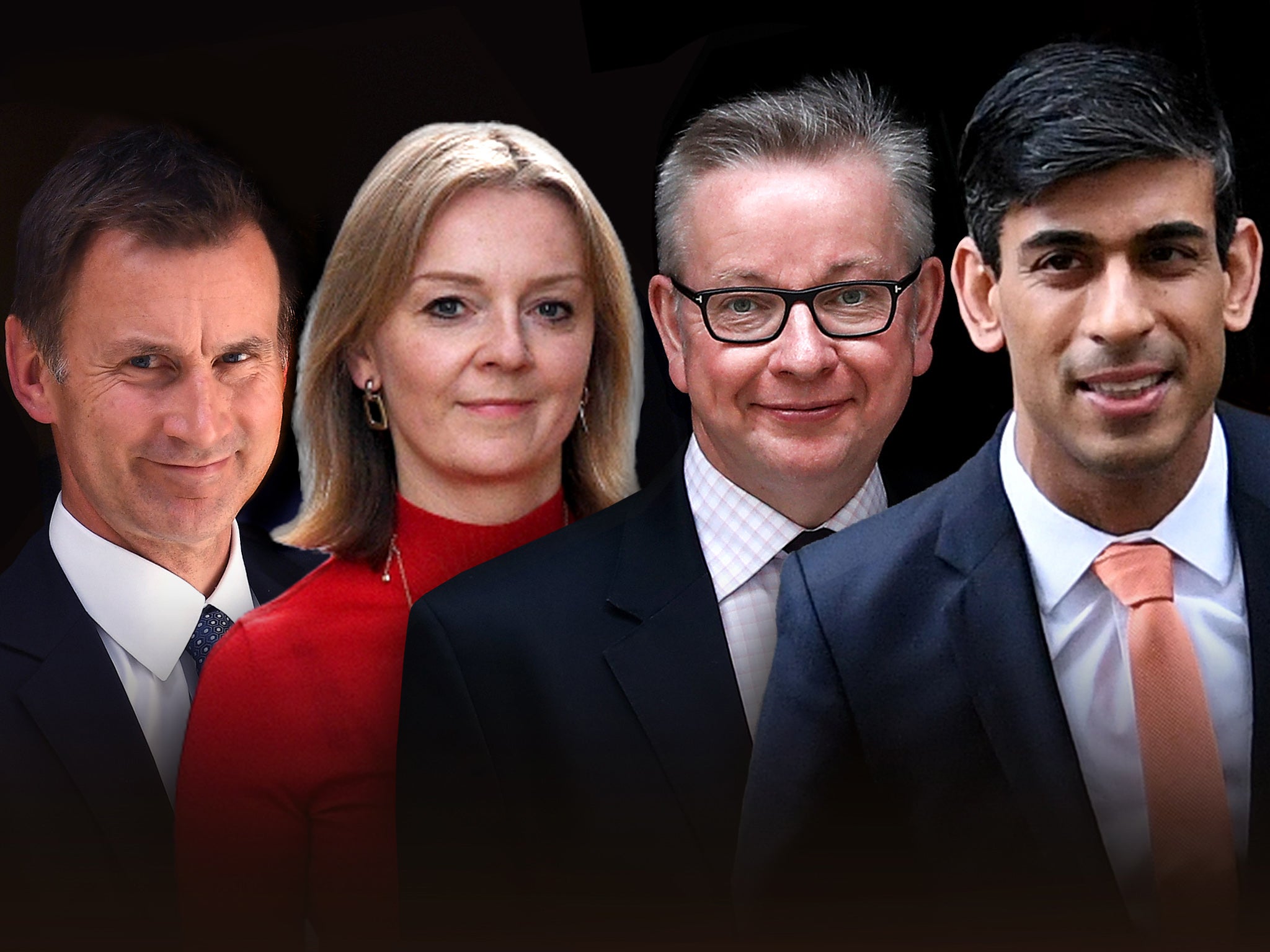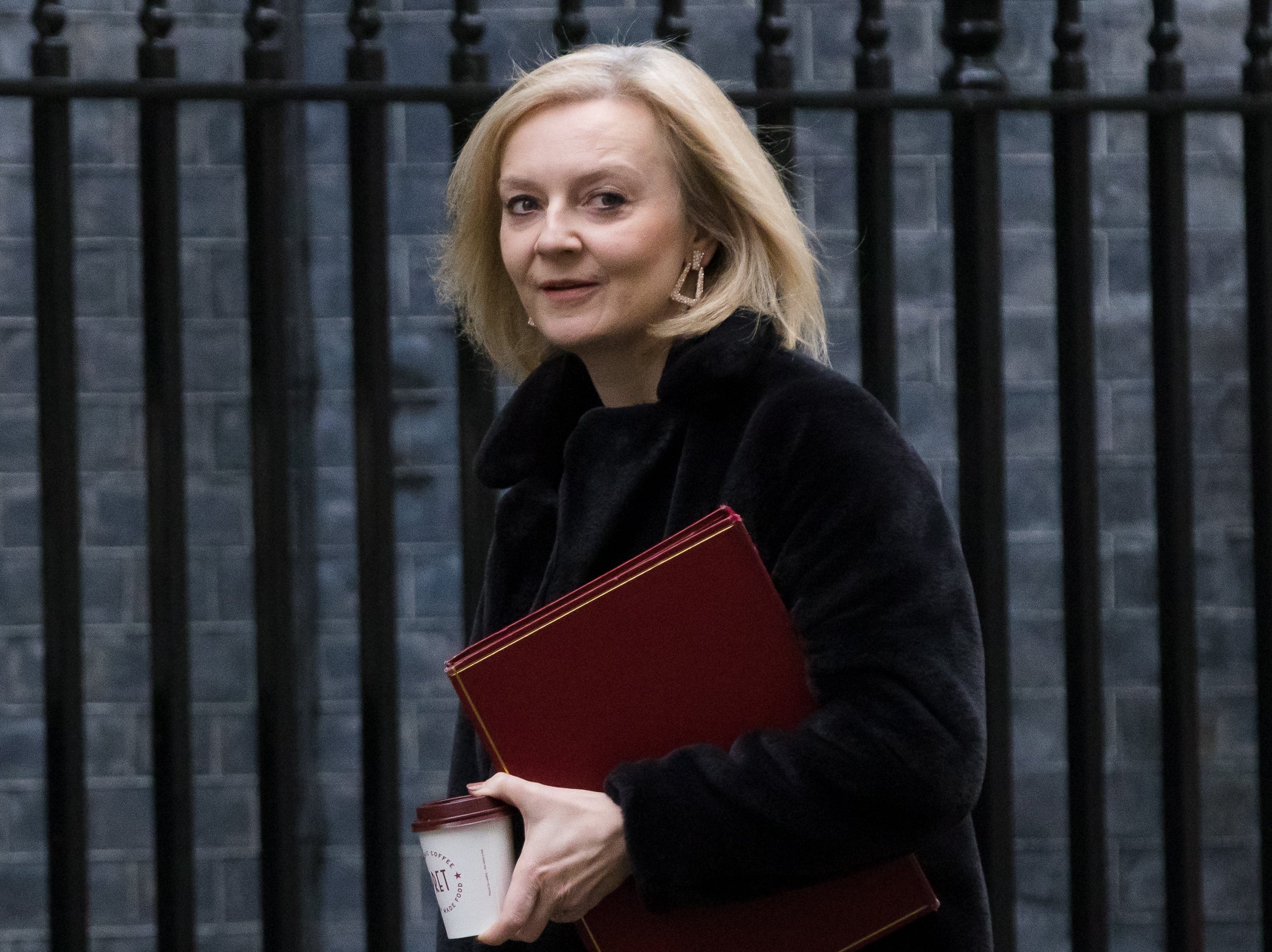It won’t be pretty (or Priti): The race to become the next prime minister
Sean O’Grady assesses the candidates breathing down the neck of an embattled Boris Johnson


Who will be the next Tory leader? And when? One good place to start, with some caution, is what the betting markets are telling us. One thing they are indicating is that things might develop quite quickly. The odds on the winner of Thursday’s by-election in North Shropshire – a crucial real-world electoral test – have switched around radically over the past couple of weeks. The Liberal Democrats are now odds-on favourite to take this rock-solid seat, shortening from 2-1 to 4-6, while the Conservatives have drifted out badly, from 2 to 1 odds-on leaders to mere evens now.
It’s still tight, but if the Lib Dems were to snatch Owen Paterson’s old constituency it would be a shocking moment, suggesting a swing of 26 per cent plus, one of the biggest since the Second World War, on a par with such political earthquakes as Orpington (1962), and, ominously, of the same order as the switch in Chesham and Amersham earlier this year. Such a result could easily be the final straw for many worried Tory MPs and activists. The Oddschecker website points overwhelmingly to a Johnson exit date in 2022, with a 50-50 chance.
As for the candidates, the bookmakers endorse the analysis from political experts and Westminster gossip. The chancellor, Rishi Sunak, leads the field at 2-1, something Johnson can’t have envisaged when he appointed him in 2020, just before the pandemic, as a more pliant replacement for Sajid Javid. Bright and personable, Mr Sunak impressed with the furlough scheme and other support for the economy, and has often seemed the acceptable face of Johnsonism. On the other hand his massive borrowings and tax hikes have not endeared him to the fiscal fundamentalists in his party. His contrived promises to cut taxes don’t seem to have convinced many.
Sunak pays assiduous attention to his personal brand (Allegra Stratton, in happier times, helped him project his image), and Treasury videos for social media look uncomfortably like leadership campaign propaganda; he likes to echo “Boris” with a chummy first name political persona. But “Rishi” is ridiculously rich and out of touch, and displays odds signs of nerdery. It’s easier to see him sleeves up ploughing through spreadsheets than it is to imagine him waving kippers around in a Midlands market town on the campaign trail, Johnson-style.
Second favourite is Liz Truss. You’d get £5 back if you put a quid on her right now. She is as anxious as Sunak to distance herself from the various fiascos and scandals of recent weeks, claiming her focus is on getting trade deals over the line. She seems popular among the newer cadre of red wall, untraditional Conservatives, and she is certainly on the right. She’s not as fluent as some of her rivals, but, without trying especially hard, she seems to have acquired a reputation as a bit of a green-sceptic and unsympathetic to the big state. A little bland if anything, she’s more the blank canvas that Tory grassroots can project their own prejudices on to. Given that the membership would have the vote on the final two contenders picked by MPs, that is a valuable asset. She’s lived down making a much-ridiculed speech about cheese imports a few years ago.

Third up is Michael Gove, (6-1) who has definitely gone a bit quiet lately. Is a more nuanced and conscientious version of Johnson what the party wants? He was an original and sincere Brexiteer, but that’s a bit of a wasting asset. Just behind Gove is Jeremy Hunt (7-1) runner-up with a respectable third of the activitsts’ backing in 2019. He’s been on the back benches ever since, building an image of quietly confident statesmanship with judicious interventions on Covid, the care crisis and foreign affairs. His problem is obviously that he’d be perceived as being boring and wet. Equally boring, but less wet might be defence secretary Ben Wallace, at 20-1 a tempting outsider.
Usually in a Tory leadership contest there’s a long tail of chancers and mavericks, some hoping to nick enough support among MPs to secure a decent job in cabinet, but no more. Into that category would go Priti Patel, Sajid Javid and, if the bookies are to be believed, Kemi Badenoch, a formidable culture warrior who makes Nadine Dorries sound like Stephen Fry. All will have their day on the hustings.
As in 2019, many in the general public will think it odd that around 100,000 Tory members can choose the next prime minister, but there we are. The Tories could try and revert to an older traditional and arrange for a successor to Johnson to “emerge” uncontested. More likely there’d be weeks more of bloodletting and recrimination and a series of pitches to the generally very right-wing grassroots. The bookies odds and commentators’ verdicts tend to mirror the popularity of the contenders in the Conservative Home opinion surveys, and there is no clear likely winner, unlike with Johnson last time round. In any case, these contests have usually been traumatic, not least in 2016, when Gove and Johnson destroyed one another and Theresa May won. It won’t be pretty.

Join our commenting forum
Join thought-provoking conversations, follow other Independent readers and see their replies
Comments